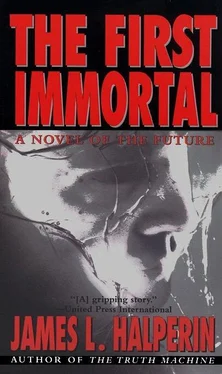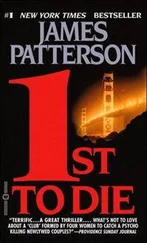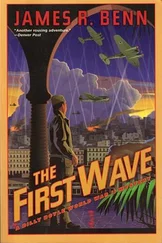I turned to Edgar Phillips, my operations manager, and began grilling him. Here I was, fifty-eight years old, never married, as driven and obsessed with work as I’d been at any time during my life-yet also hoping for an excuse, any excuse, to procrastinate. “How close is the Villard Group in Geneva to doing a cat?”
“Just had a minor setback. I figure at least six more months.”
Good. “What about Rostanov in St. Petersburg? They solve the axonial transport problem yet?”
He nodded slowly. “Stephanie knows one of the principal investigators. Says they’re very close to a breakthrough. She couldn’t tell whether that meant a week or ten weeks, though.”
“And that Microsoft spin-off in Melbourne?” I asked him.
“I’m worried about them. They’ve been quiet, too quiet, for nearly a month.”
“Oh, crap. You’re not making this any easier for me.”
“It’s your call, Trip,” Edgar said.
I held my (second) Wendy-girl close. As she snuggled in my arms, she discharged a sound that was part sigh, part grunt, the very essence of contentment.
How could I do this? I thought. Then: How could I not? The “subject” had to be well-taught, with a wide range of responses and a significant recognition-range of vocabulary. It was also best that the subject be of a certain age, with all the inevitable costs to brain and body.
I rocked Wendy II in my Roswell chair. So little time was left. So little time. Thirteen years ago she’d come to me at seven weeks of age, a frolicky vessel of joy. I’d loved her well and had found the gift more than requited.
But there was really no choice, was there? Not when we’d come this far…
The first hurdle we nanoscientists had cleared in our efforts to reverse biostasis was the challenge of building machines that could operate at liquid nitrogen temperatures. This problem had been solved by assembling the first machines from molecules more versatile than the proteins they were designed to repair.
Other protein machines had been programmed to work like enzymes, bonding molecules together one by one, assembling exact, predesigned metallic and ceramic structures. The first such machines, assembled in 2029 by the Zyvex Corporation of Dallas Texas, were operated by simple on-board computers with tiny but flawless memories and ten million times human speed-of-thought.
By 2037, Zyvex engineers had constructed the first disassemblers, composed of a mechanical computer roughly six microns cubed, the equivalent volume of about one-fortieth of a human cell, and a casing about sixty times larger than the computer, with eight arms composed of iron atoms. The first disassemblers could remove molecules from a structure, layer by layer, recording the identity and content of each molecule.
Redundant systems limited the pace of the earliest nanomachines to a glacial 2,500 molecules per second, too slow for cellular repair by a factor of at least two orders of magnitude (100 times). At that speed, except at subfreezing temperatures, decay would occur faster than repair, and the machines were too large for deployment in frozen organisms. Yet at least two million removals per second seemed achievable.
In 2043, the first replicating assemblers had been built. These devices could not only assemble molecules based on instructions received via radio-like devices from any compatible AI system, but could also reproduce themselves. Parts were never a problem, since atoms do not require premanufacturing. Thus assemblers had suddenly become cheap—virtually free—spurring an explosion of nanotech research and efficiencies.
Still, numerous safeguards had to be built into the original programming to prevent anyone from building anything dangerous, and these safeguards had slowed the machines’ performance. They’d also kept their sizes too large for most medical applications.
Throughout the successive twenty years, nanomachines had gradually become faster and smaller. Over the past half decade, I’d assembled my own team of eight nanotech and AI engineers and scientists, mostly fellow VR phobes. Perhaps I’d already recognized that the amount of work a person could accomplish tended to be inversely proportional to his or her VR consumption. More likely, I simply gravitated toward people who were most like myself.
After five years, we’d built a series of replicators and disassembler/assemblers that seemed suited for biostasis reversal; the first units capable of both dis- and reassembly that were also small enough to penetrate frozen bloodstreams. The D/A’s each contained a tiny computer capable of holding slightly more information than human DNA does. These in turn were connected by acoustic communication devices to a network of much larger central computers.
By law, we’d been required to design replicators devoid of survival skills, and with redundant systems that automatically repaired mutations. The machines could reproduce themselves, build the D/A’s to specification, and nothing more. It was an irritating law, I’d often mused, but a sensible one.
Also required, and equally rational, was that all nanotech experiments be performed in palm-sized sealed laboratories using Molecular Reconstruction Software. We could hook these mini-workshops into any two-way screen and actually build every nanomachine we designed, using an array of sample atoms and molecules right there in the lab. We could even insert genetic materials to test the machines. But if anyone tried to unseal the lab to remove the physical machines, electrical charges would vaporize the contents. Thus we could design and test nanomachines, but the machines themselves could never be unleashed until their capabilities had been analyzed and cleared.
Last week, the World Government Nanotech Agency had finally issued a permit and instruction code enabling us to build the replicators outside our sealed labs.
Now we were ready to rock and roll.
Gathered in my living room, the entire team watched the demonstration.
“Wendy,” I said in what I hoped was an uninflected conversational voice, but I did not—could not—look at her. “May I have my remote activator, please?”
Wendy II slipped from my arms, found the device under a pillow, picked it up between her teeth, and gently placed it on my knee.
“Wendy, I’d love a ginger ale.” I activated the remote.
The dog’s footfalls receded. I heard the gentle whirring of the kitchen assembler as it spun mostly hydrogen, oxygen, and carbon atoms into my favorite formula. Then I heard the custom tray being assembled and lowered to dog level, and Wendy’s paws against the floor as she returned, tray in jaw. Within sixty seconds, the refreshment had been delivered.
I placed the soda on the nearest wall shelf, lifted Wendy-girl into my arms, and walked stiffly toward the door. We all took the first elevator down to the lab. Although the ride lasted nearly forty seconds, I would be unable to recall any of it. I can assure you that such unreality is wholly unfamiliar to a man grounded in the world of absolutes.
Later that evening I would view the AudioVid record, and watch in horror as my assistant, Paul Adler, had reached to take the dog from my arms. I would see and hear myself—me, Trip Crane—bellowing, “No!” then releasing her despite my own protestations. Such lapse of decorum; such lapse of memory. Had it really happened?
Wendy II now lay frozen to minus 196 degrees C, where she would remain for twenty-five more days, perhaps having already suffered irreversible brain damage. Because she’d trusted me. Had I betrayed that trust over a mere theory?
June 28, 2064
—Nanoreplicators devour several acres of Central Park in New York City! What begins as an apparent suicide by a professor of nanotechnology, recently denied tenure by New York University, escalates into a crisis of world concern. At 7:48 P.M. EST, Dr. Robert Kermel simply lies down in full view of public cameras, swallows a pill of approximately one cubic centimeter, and vows his intention to “kill myself and take the entire goddamned world with me.” Hundreds of citizens report the incident, and when medevacs arrive minutes later, Kermel is already dead. Two emergency response workers and one bystander are irretrievably consumed in a puddle of foraging replicators, and a second bystander, whose affected limbs were amputated in time, will need to have both arms and a leg regrown. All others in the vicinity appear to have escaped, at least for now. Meanwhile, the lake of “gray goo” continues to spread quickly, doubling in volume every sixteen minutes, while World Government nanocrisis officials attempt to devise an emergency strategy.—Compaq stock soars after the company demonstrates, to rave reviews, its new Artificial Bloodhound documentation upgrade. The product can be added to any wristband PC to record odors as accurately as PCs now document by sight and sound. AB continuously samples air in the vicinity, and analyzes it, recording scents, trace elements, even DNA from people who exhale near the user. Experts predict that most new wristband PCs will carry the enhancement by early next year.—The World Parenting Department issues its one millionth license, since the agency’s inception in 2045, to raise clones of deceased relatives. Most such permits have been granted within the last four years.
Читать дальше












